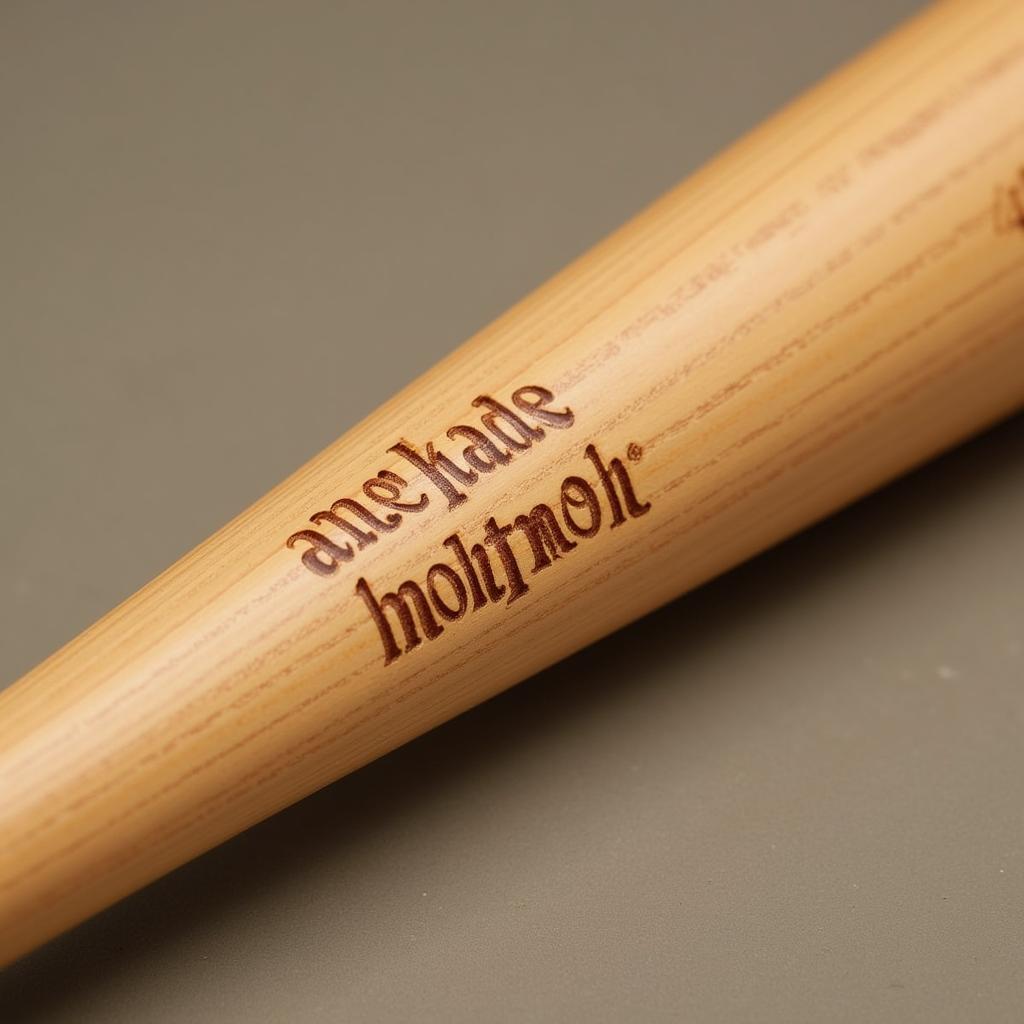Choosing the Right Wood Softball Bat
October 20, 2024Wood Softball Bats have a certain charm and authenticity that metal bats just can’t replicate. There’s a satisfying feeling of connecting with the ball, the classic “crack” that echoes across the field, and a sense of tradition that takes you back to the roots of the game. But with so many options available, finding the right wood softball bat can feel like stepping up to the plate with the bases loaded. Don’t worry, I’m here to help you knock it out of the park!
This comprehensive guide will equip you with all the knowledge you need to make an informed decision. We’ll delve into the world of wood softball bats, exploring the different types of wood, weight and length considerations, and tips for selecting the perfect bat to elevate your game.
Types of Wood: What’s Your Swing Style?
Just like choosing the right football boots can enhance your performance on the pitch, selecting the appropriate wood for your softball bat is crucial for maximizing your hitting potential. Each wood type offers a unique combination of characteristics, impacting factors like swing weight, durability, and sweet spot size.
Maple: The Power Hitter’s Choice
Maple is a dense, hardwood favored by power hitters for its exceptional hardness and durability. This robust wood delivers maximum energy transfer upon contact, resulting in explosive hits that can send the ball soaring.
 Maple Wood Softball Bat
Maple Wood Softball Bat
Ash: The Balanced Performer
Ash wood has been a popular choice for softball bats for decades, known for its balanced combination of weight, flexibility, and forgiveness. Its slightly softer composition compared to maple provides a larger sweet spot, making it an excellent option for contact hitters looking for consistency and a comfortable swing.
Birch: The Sweet Spot Hunter
Birch wood falls between maple and ash in terms of hardness, offering a blend of power and forgiveness. Its slightly larger sweet spot compared to maple and lighter weight than ash makes it a versatile choice for players of all skill levels.
Bamboo: The Eco-Friendly Alternative
Bamboo has emerged as an eco-friendly and high-performance alternative in recent years. Its remarkable strength-to-weight ratio makes it incredibly lightweight and durable, allowing for faster swing speeds and a larger sweet spot.
Weight and Length: Finding the Perfect Fit
Choosing the right weight and length for your softball bat is crucial for achieving optimal swing mechanics and maximizing your hitting power.
Weight: A Balancing Act
The weight of the bat significantly impacts your swing speed and control. A heavier bat can generate more power but might compromise swing speed, while a lighter bat allows for faster swings but might sacrifice power.
“Finding the right bat weight is all about balance,” says Sarah Garton, former professional softball player and renowned batting coach. “You want a bat that’s heavy enough to generate power but light enough to swing with speed and control.”
Length: Extending Your Reach
The length of the bat affects your reach and swing arc. A longer bat provides a wider hitting zone but can be more challenging to control, while a shorter bat offers better control but sacrifices reach.
To determine the appropriate bat length, stand up straight with your arms relaxed at your sides. Measure the distance from the ground to your hipbone. This measurement can serve as a starting point for finding the right bat length.
Tips for Choosing the Perfect Bat
Selecting the perfect wood softball bat is a personal journey, but here are a few tips to guide you:
- Consider your swing style: Power hitters might prefer maple for its hardness and power, while contact hitters might gravitate towards ash or birch for their larger sweet spots.
- Experiment with different weights: Visit a sporting goods store and try swinging different bat weights to find the sweet spot that balances power and swing speed.
- Focus on comfort: The most important factor is choosing a bat that feels comfortable and balanced in your hands, allowing for a smooth and controlled swing.
Conclusion
Choosing the right wood softball bat can significantly impact your performance on the field. By understanding the different wood types, considering weight and length factors, and focusing on comfort, you can find the perfect bat to elevate your game and make every swing count. Remember, practice makes perfect, so grab your bat and head out to the field to unleash your inner power hitter!
FAQs
Q: How do I break in a wood softball bat?
A: Breaking in a wood bat helps increase its durability and performance. Start by hitting soft toss or using a pitching machine with reduced speed, gradually increasing the impact over time. Avoid hitting hard objects or using the bat for anything other than hitting softballs.
Q: How long do wood softball bats last?
A: The lifespan of a wood softball bat varies depending on usage, care, and quality. With proper care and regular use, a wood bat can last for a season or more.
Q: Can I use a wood softball bat for baseball?
A: While it’s possible to use a wood softball bat for baseball, it’s not recommended. Baseball bats are designed for the specific weight and size of a baseball, while softball bats are tailored for softballs.
Q: How do I clean and store my wood softball bat?
A: After each use, wipe down your bat with a damp cloth to remove dirt and debris. Store it in a cool, dry place, preferably in a bat bag to protect it from extreme temperatures and humidity.
Need more help? Contact our team at 0963418788, email us at [email protected], or visit us at 2M4H+PMH, Phường Nghĩa Thành, Gia Nghĩa, Đắk Nông, Việt Nam. We’re here for you 24/7! You might also be interested in reading about bubble gum softball bat to further enhance your knowledge.